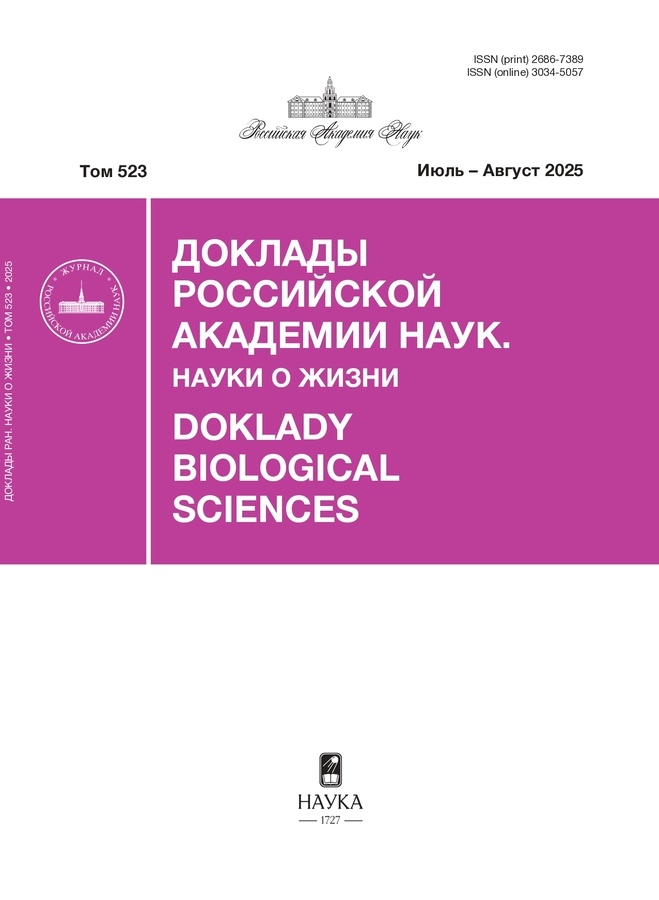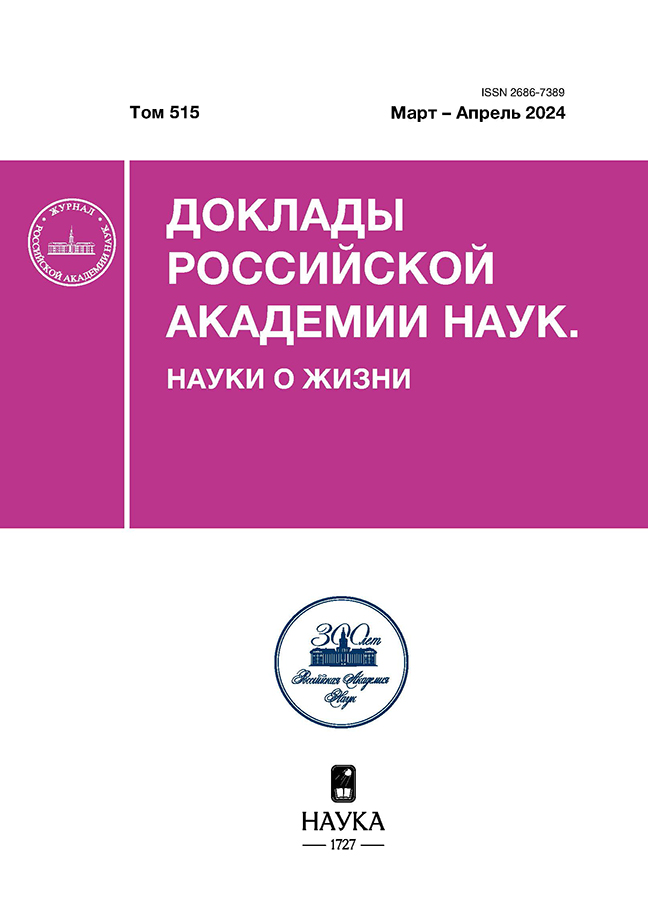Необычно крупные восточные длиннокрылы, Miniopterus Fuliginosus – смещение признаков или результат гибридизации?
- Авторы: Крускоп С.В.1,2, Жукова С.С.1
-
Учреждения:
- Московский государственный университет им. М. В. Ломоносова
- Совместный Российско-Вьетнамский Тропический научно-исследовательский и технологический центр
- Выпуск: Том 515, № 1 (2024)
- Страницы: 128-135
- Раздел: Статьи
- URL: https://cijournal.ru/2686-7389/article/view/651453
- DOI: https://doi.org/10.31857/S2686738924020218
- EDN: https://elibrary.ru/WDNMFZ
- ID: 651453
Цитировать
Полный текст
Аннотация
В ходе изучения морфологической изменчивости длиннокрылов (Miniopterus) мы обнаружили, что экземпляры, происходящие из вьетнамской провинции Каобанг и определенные как M. fuliginosus, по размеру ближе к более крупному виду – M. magnater. Анализ митохондриальных генов определенно помещает эти экземпляры в первый вид. В то же время морфометрический анализ по 21 черепному промеру определенно ставит эти экземпляры ближе к M. magnater и показывает их отличия от M. fuliginosus из разных частей ареала. Мы предполагаем, что в горах севера Вьетнама и юга Китая M. fuliginosus в силу не известных пока обстоятельств занимает нишу более крупного вида. Однако недостаточные данные по ядерным маркерам допускают и гибридное происхождение этой популяции, заимствовавшей мтДНК другого вида.
Ключевые слова
Полный текст
Об авторах
С. В. Крускоп
Московский государственный университет им. М. В. Ломоносова; Совместный Российско-Вьетнамский Тропический научно-исследовательский и технологический центр
Автор, ответственный за переписку.
Email: selysius@mail.ru
Зоологический музей
Россия, Москва; Вьетнам, ХанойС. С. Жукова
Московский государственный университет им. М. В. Ломоносова
Email: selysius@mail.ru
Биологический факультет
Россия, МоскваСписок литературы
- Koopman K.F. Chiroptera: Systematics, vol. VIII of Mammalia, New York: Walter de Gruyter, 1994. p. 60.
- Simmons N.B. Order Chiroptera, in Mammal species of the World: a taxonomic and geographic reference. 3rd Edit.V. 1. Wilson D.E., Reeder D. M. Eds., Baltimore Johns Hopkins Univ. Press, 2005.
- Ibáñez C. and Juste J. Family Miniopteridae (Long-fingered Bats), in Handbook of the Mammals of the World. v. 9: Bats, Wilson D. E. and Mittermeier R. A. Eds., Barcelona: Lynx Edicions, 2019.
- Appleton B. R., McKenzie J. A., Christidis L. Molecular systematics and biogeography of the bent-wing bat complex Miniopterus schreibersii (Kuhl, 1817) (Chiroptera: Vespertilionidae). Mol. Phyl. Evol., 2004. v. 31. № 2, p. 431–439.
- Endo K., Iida K., Nunome M., et al. Phylogeography of Miniopterus fuliginosus (Chiroptera) with special reference to Jeju Island, South Korea, Mammalia, 2019. v. 83. № 6, p. 610–614.
- Тиунов М. П., Крускоп С. В., Орлова М. В. Рукокрылые Дальнего Востока России и их эктопаразиты. М.: Перо, 2021.
- Wilson D. E. Order Chiroptera, in A guide to the Mammals of China, Smith A.T., Xie Y., Eds., Princeton: Princeton Univ. Press, 2008.
- Li S., Sun K., Lu G., et al. Mitochondrial genetic differentiation and morphological difference of Miniopterus fuliginosus and Miniopterus magnater in China and Vietnam, Ecol. Evol., 2015. v. 5. № 6. p. 1214–1223.
- Maeda K. Studies on the classification of Miniopterus in Eurasia, Australia, and Melanesia, Honyurui Kagaku (Mammalian Science), 1982. Suppl. 1. p. 1–176.
- Kruskop S.V. Bats of Vietnam. Checklist and an identification manual. 2nd edition, revised and supplemented, Biodiversity of Vietnam series. Moscow: KMK Ltd., 2013.
- Sambrook J., Fritsch E.F., Maniatis T. Molecular Cloning – A Laboratory Manual. N. Y.: Cold Spring Harbour Lab. Press, 1989, 2nd ed.
- Baker R.J., Porter C.A., Patton J.C., Van Den Bussche T.A. Systematics of bats of the family Phyllostomidae based on Rag2 DNA sequences, Occas. Pap. Mus. Texas Tech. Univ., 2000. v. 202. p. 1–16.
- Artyushin I.V., Kruskop S.V., Lebedev V.S., Bannikova A.A. Molecular phylogeny of Serotines (Mammalia, Chiroptera, Eptesicus): evolutionary and taxonomical aspects of the E. serotinus species group, Biol. Bull., 2018. v. 45, № 5, pp. 469–477.
- Ivanova N.V., Clare E.L. and Borisenko AV. DNA barcoding in Mammals, in DNA Barcodes: Methods and Protocols, Kress W. J. and Erickson D. L., Eds., NJ: Humana Press, 2012.
- Hall T.A. BioEdit: a user-friendly biological sequence alignment editor and analysis pro-gram for Windows 95/98/NT, Nucleotide, 1999, v. 41, p. 95–98.
- Burland T.G. DNASTAR’s lasergene sequence analysis software, Methods Mol. Biol., 1999. v. 132, p. 71–91.
- Kusuminda T., Mannakkara A., Ukuwela K.D.B., et al. DNA barcoding and morphological analyses reveal a cryptic species of Miniopterus from India and Sri Lanka, Acta Chiropt., 2022, v. 24, № 1, p. 1–17.
- Furman A., Çoraman E., Çelik Y. E. et al. Cytonuclear discordance and the species status of Myotis myotis and Myotis blythii (Chiroptera), Zoologica Scripta, 2014,v. 43, № 6, p. 549–561.
- Çoraman E., Dietz C., Hempel E., et al. Reticulate evolutionary history of a Western Palaearctic Bat complex explained by multiple mtDNA introgressions in secondary contacts, J. Biogeogr., 2019, v. 46, p. 343–354.
- Bilgin R., Gürün K., Maraci Ö., et al. Syntopic occurrence in Turkey supports separate species status for Miniopterus schreibersii schreibersii and Miniopterus schreibersii pallidus (Mammalia: Chiroptera), Acta Chiropt., 2012. v. 14, № 2, p. 279–289.
Дополнительные файлы
















